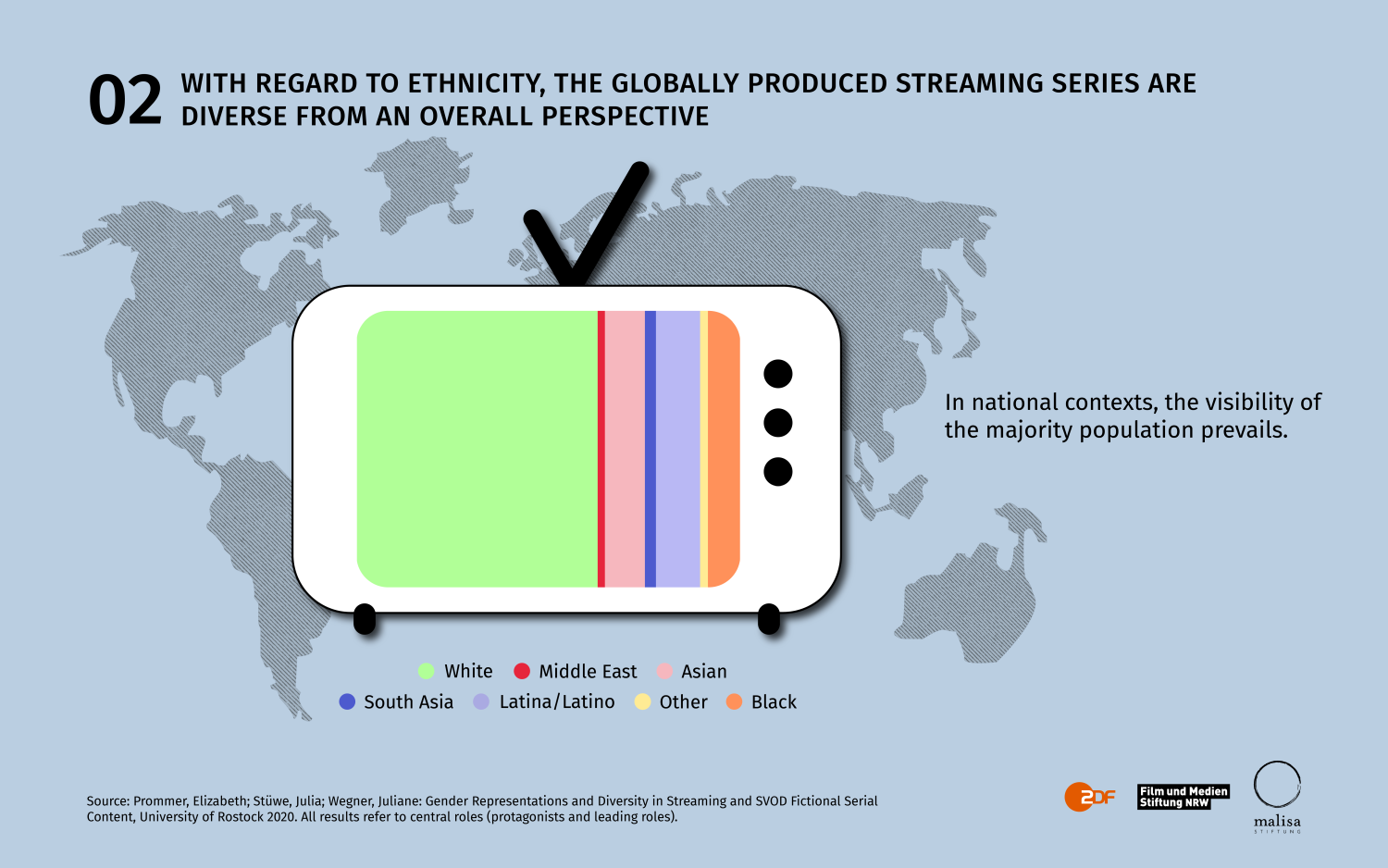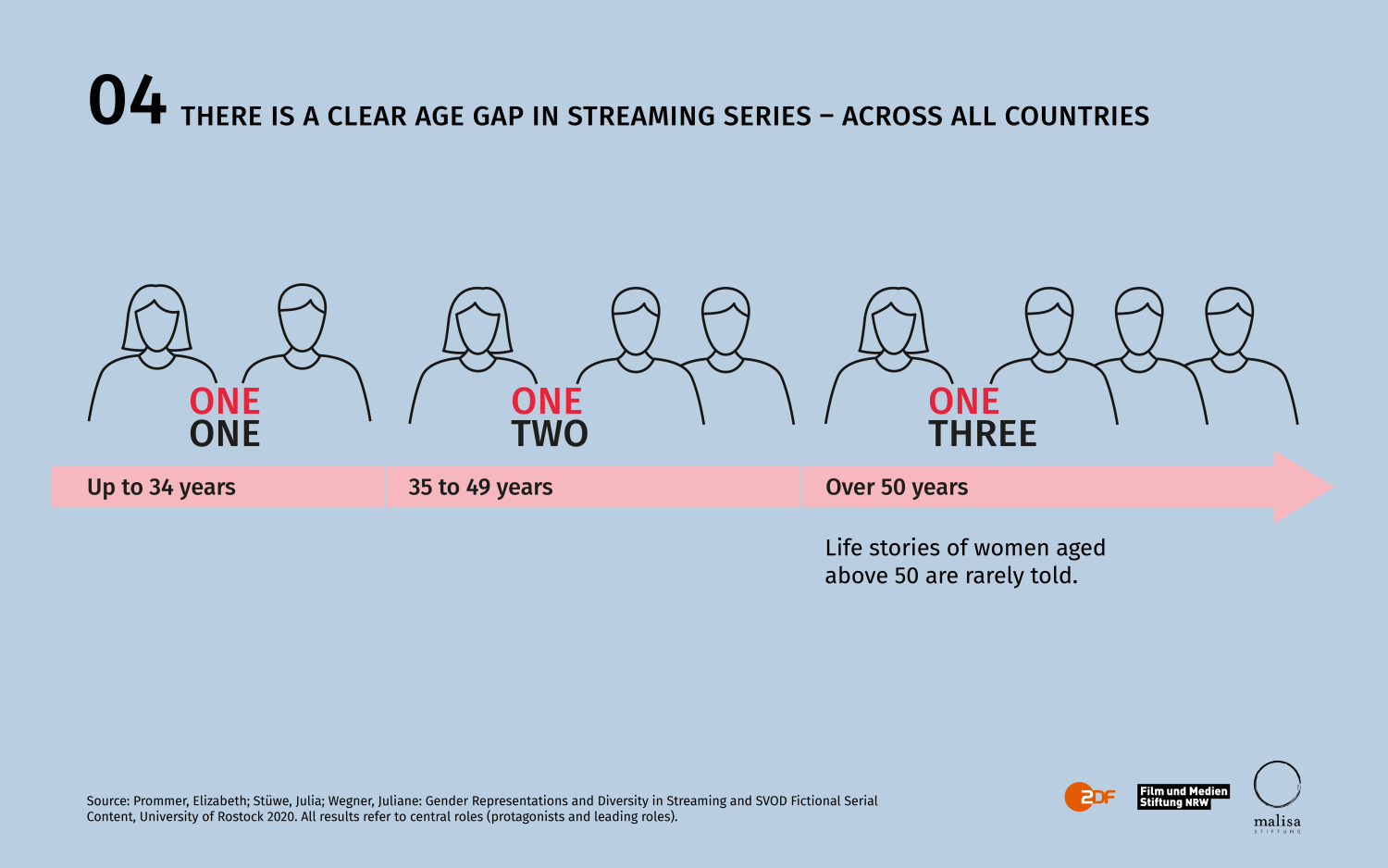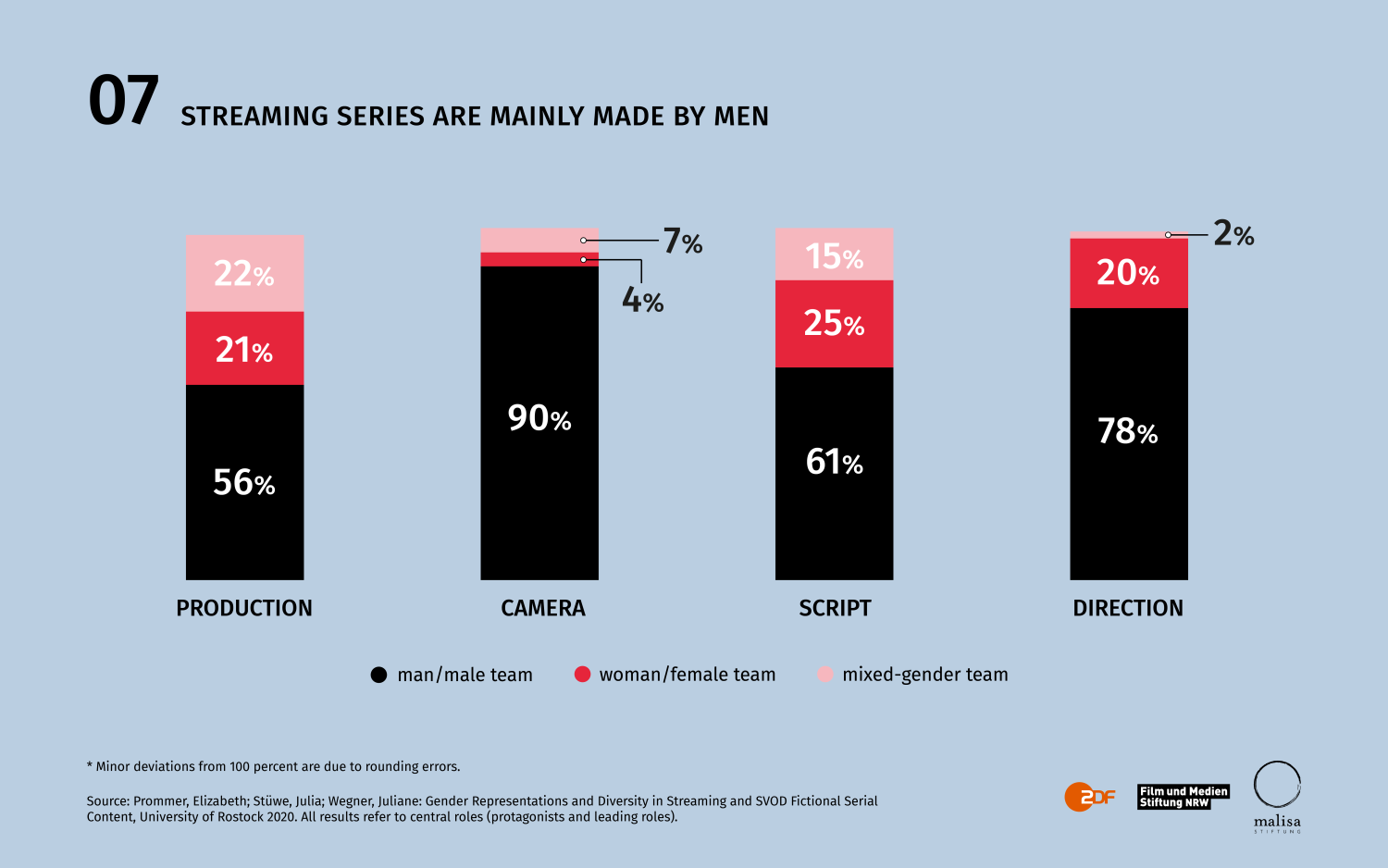Gender Representations and Diversity in Streaming and SVOD Series
So multi-colored and diverse – really?
Which gender images are shown in series of streaming and SVOD providers that are broadcast in Germany? How often are men, women and non-binary persons represented in central roles? How are they portrayed? These are the questions addressed in a study sponsored by the Film- und Medienstiftung NRW, ZDF and the MaLisa Foundation. For the first time, the study takes stock of the current situation, also with regard to representation of ethnic diversity and sexual orientation.
The study “Gender Representations and Diversity in Streaming and SVOD Fictional Serial Content” was conducted by Prof. Dr. Elizabeth Prommer at the Institute for Media Research at the University of Rostock.
For the first time, it provides an analysis of representations regarding gender, sexual orientation and ethnic attribution in the fictional serial productions (SVOD Originals) of the streaming and subscription video on demand platforms operating on the German market.
The analysis covers nearly 200 series from providers such as Netflix, Amazon Prime, Sky and TNT Germany, which were released on the platforms between January 2012 and July 2019. These include both German productions and productions from other countries.
The study was supported by the Film- und Medienstiftung NRW, ZDF (Zweites Deutsches Fernsehen) and the MaLisa Foundation. The results were published on October 22, 2020.
THE RESULTS OF THE STUDY IN DETAIL:
1. The examined streaming series show overall diverse sexual orientations.
- Among the figures with recognizable sexual orientation, 9 percent are LGBQ (lesbian, gay, bisexual, queer).
- For comparison: In a representative study (Dalia Research 2016), around 7 percent of respondents in Germany described themselves as LGBT persons (lesbian, gay, bi, trans).
2. With regard to perceived ethnicity, the streaming series are diverse from an overall perspective. In national contexts, the visibility of the majority population prevails.
- Around 63 percent of the central roles in globally produced streaming series are White. In addition, about 12 percent Latinx are represented. Another 10 percent can be read as Asian, 8 percent as Black. 3 percent are perceived as South Asian and 2 percent as Middle Eastern.
- In national contexts, the visibility of the majority population prevails. In German productions 89 percent of the central roles are White, none can be perceived as black or Asian, 11 percent can be attributed to the Middle East.
3. Female characters are also underrepresented in streaming series. Non-binary and other gender identities are hardly ever represented.
- German productions show the lowest number of women: The proportion of women in central roles is 35 percent. In Asian productions, around 45 percent of central roles are female, in North American productions 43 percent, and in South and Central American productions the share of female central roles is around 39 percent.
- In European productions (excluding Germany), the proportion of women in central roles is around 42 percent. The average value for all productions examined is also 42 percent.
- Non-binary and persons with other gender identities are hardly ever featured. In productions in all countries, they can be seen in central roles in only nine of 1,911 cases (0.5 %). In German productions they are not represented at all.
4. There is a clear age gap in streaming series – across all countries.
- If the ratio between women and men up to 34 years of age in central roles is still balanced, in the age group between 35 and 49 there are almost twice as many men as women. From the age of 50, the ratio between women and men is around 1:3.
5. In streaming series women are cast along traditional gender images.
- While in romantic formats around 49 percent of the central roles are occupied by women, in political, action and adventure series, it is only just under 36 percent.
6. The diversity of women in streaming series is limited overall, gender roles remain stereotyped.
- Women occur less frequently, are young and are less often depicted as homosexual than men. Central roles show women to 4 percent as homosexual, men to 7 percent.
- Women have standardized slim bodies. In central roles they are twice as often very thin (16 percent) as men (8 percent).
- In addition, women appear in professions that emphasize their emotional competence. About two thirds of central roles of characters in occupational fields such as sales and health care are female, thus twice as many as male characters in these fields. In contrast, around 90 percent of the figures that can be attributed to organized crime are male.
7. Streaming series are mainly made by men.
- The creative teams are male dominated. This applies to all areas: from production and camera work to script and direction. This is most evident in the areas of camera and direction, where the proportion of men is 90 and 78 percent respectively.
GRAPHICS OF THE STUDY:

Gender Representations and Diversity in Streaming and SVOD Series
So multi-colored and diverse – really?
Study “Geschlechterdarstellungen und Diversität in Streaming- und SVOD-Angeboten“ (in German)Graphics (in English)
Press Release (in German)






